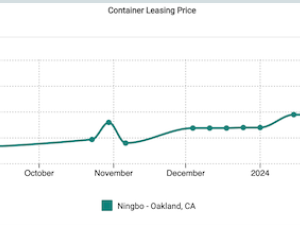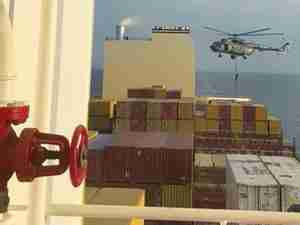Member container shipping lines in the Trans-Pacific Stabilization Agreement (TSA) cited January-February 2006 figures from the Port Import-Export Reporting Service (PIERS) which show more than 20% cargo demand growth overall compared with the same period a year ago. The numbers are particularly strong via California ports (up 19% in January and 21% in February) and to the US East Coast via the Panama Canal (up 30% in January and 26% in February). While some of the most recently-released figures may be subject to revision, even low-end estimates suggest a very positive market outlook.
'As the lines were saying last year amid some skepticism, we don't believe the shift in manufacturing to China, Southeast Asia and elsewhere in the region has run its course,' said TSA Executive Director Albert A. Pierce, noting that China-US shipments for the January-February period grew by an average 24%. 'We also continue to see strengthening consumer confidence, along with business spending on computers, telecommunication equipment and machinery, as US economic fundamentals remain healthy.' Nearly four months into 2006, vessel utilization among TSA carriers remains in the mid-90% range on the West Coast and nearly 100% full via the Panama Canal. 'Frankly,' Pierce added, 'We could use some of that added vessel space that has some analysts so concerned, and we're not even at the peak season yet.'
Pierce reaffirmed TSA's earlier view that infrastructure and operating constraints on new, larger vessels entering service, alongside continuing steady volume growth from Asia, will keep overall ship capacity roughly in line with cargo demand through 2006 and into 2007. At the same time, lines face a minimum seven percent increase in overall operating costs during 2006 ' including an 11% rise in equipment repositioning costs due to the ongoing 2.8-to-1 trans-Pacific cargo imbalance, and as much as a 25% increase in inland rail and truck costs to offset new investment in infrastructure, equipment and crews. Information technology and security-related costs are also expected to grow significantly.
According to Drewry Shipping Consultants a seven percent rise in operating costs with no offsetting increase in freight rates ' and factoring in additional higher costs from new vessel strings and cargo handling, based on an assumption of eight percent eastbound cargo growth in 2006 ' would add an estimated $2.4 billion to trans-Pacific operating costs. 'In this environment, revenue is key,' Pierce explained. 'Carriers must keep pace on cost recovery in order to meet evolving customer service requirements in an increasingly sophisticated and complex trade lane.'







